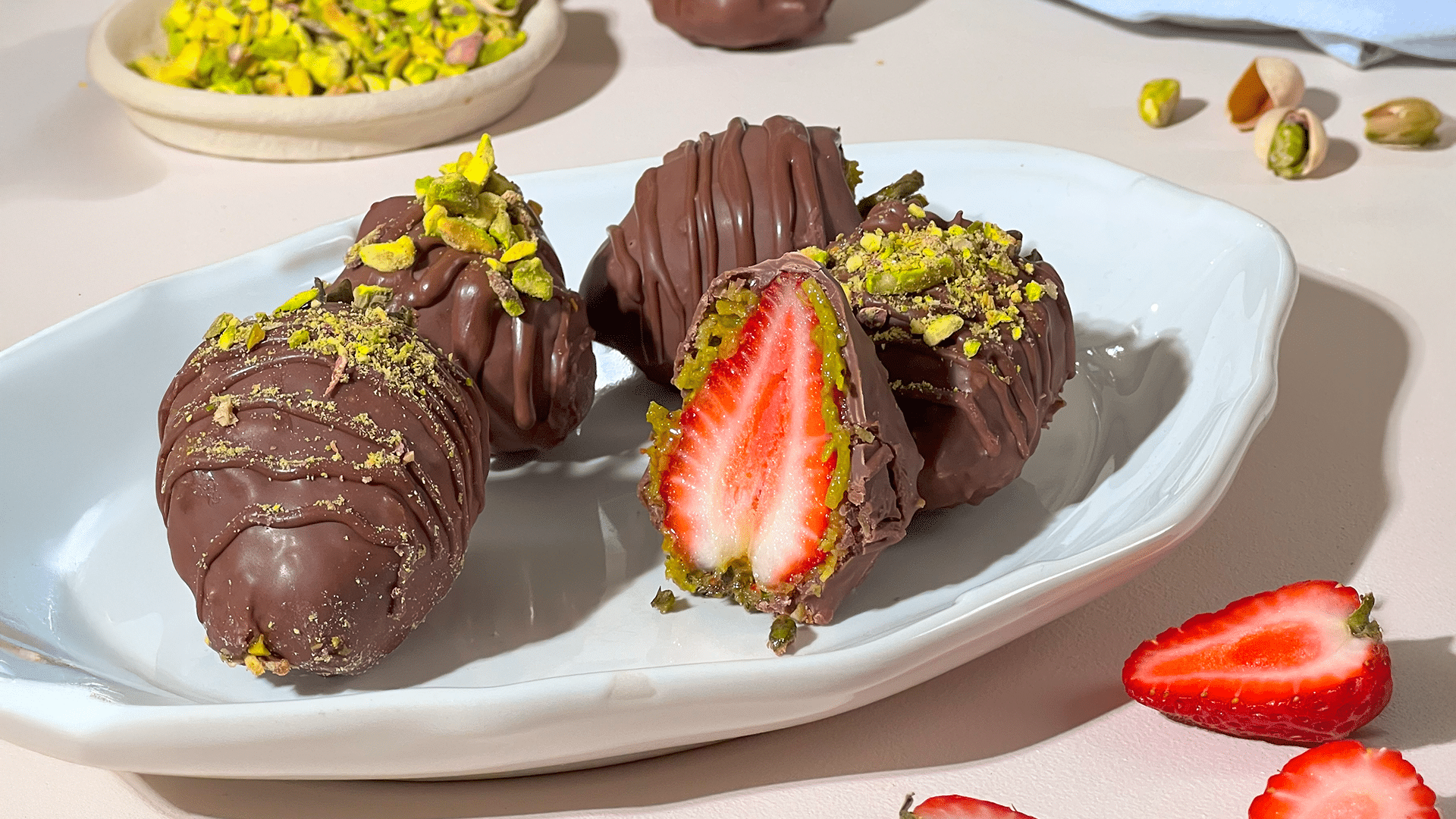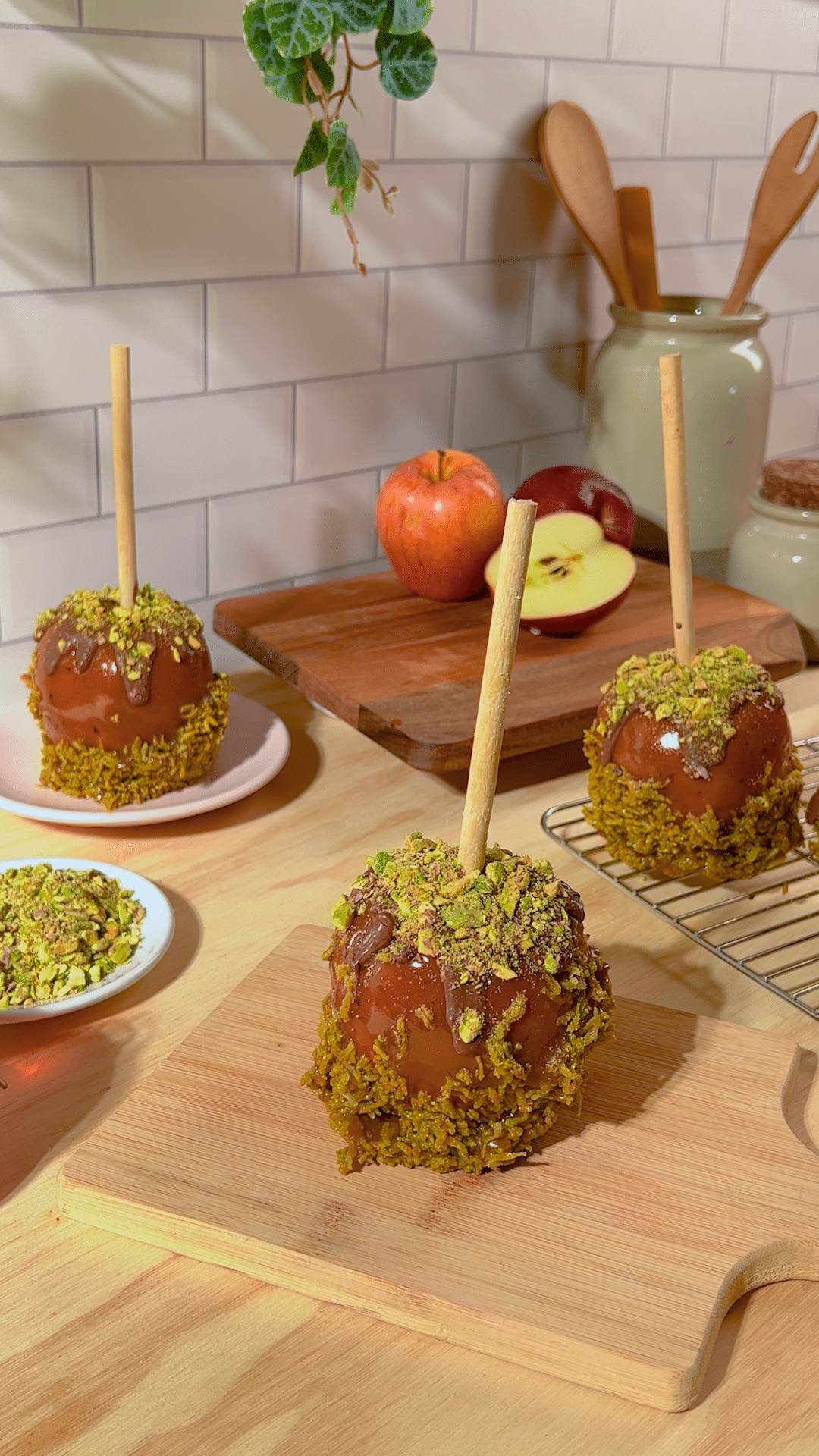Break the internet with these sweet and satisfying Dubai chocolate remixes!

Dubai Chocolate Covered Strawberries
Difficulty: Easy • 12 Servings • Total Time: 50 Minutes
Ingredients:
- 3 Tbsp unsalted butter
- 1 cup Kataifi pastry
- ¼ cup pistachio butter
- 12 strawberries
- 1 cup semi-sweet chocolate chips, melted
- crushed pistachios
Directions:
- In a medium skillet over medium heat, melt the butter. Add the Kataifi pastry, and stir constantly until golden and crispy.
- Chop the fried Kataifi and mix with the pistachio butter until well combined.
- Add a spoonful to a small piece of plastic wrap. Place a strawberry in the middle, point down. Lift the plastic wrap up and shape the Kataifi around it to cover completely. Repeat with remaining berries and Kataifi. Twist the plastic wrap closed and freeze for 20 minutes.
- Remove plastic wrap and dip berries in the melted chocolate. Refrigerate 15 minutes, or until the chocolate sets.
- Finish with a drizzle of more chocolate, then sprinkle crushed pistachios on top and enjoy!
Dubai Chocolate Caramel Apple
Difficulty: Easy • 6 Sservings • Total Time: 45 Minutes
Ingredients:
For the caramel:
- 1 cup light brown sugar
- ½ cup unsalted butter
- ½ cup light corn syrup
- ¾ cup sweetened condensed milk
- 1 Tbsp pistachio extract
- 6 Gala apples
- 1 cup semi-sweet chocolate, melted
- 1 cup crushed pistachios
Directions:
- To make the caramel: in a medium saucepan over medium heat, combine all ingredients for the caramel. Stir constantly for about 10 minutes, until the caramel thickens and darkens slightly. Once it reaches 190°F, remove from heat.
- Insert a thick skewer in each apple. Dip the apples into the caramel while still warm, turning to coat evenly. Place on a parchment lined baking tray to cool completely.
- Once the caramel has set, drizzle the melted chocolate over top of each apple, and sprinkle with the crushed pistachios. Let the chocolate harden, then serve!

